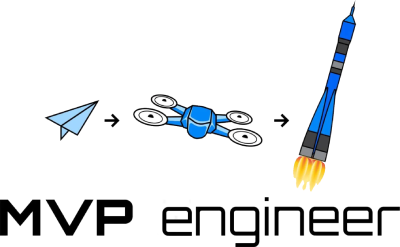
There are countless technology stacks that can be used, some are better for certain tasks. Others are more popular, or more academically rigorous. Here, I'll lay out the case that 95% of MVPs should be built in a powerful, easy to write, popular framework. Python and Flask, Postgres, React (if necessary), Docker, Google Cloud Platform.
Python is the base of this stack. It is the most popular language in the world, followed by Java and Javascript. Python is easy to write, and quick to develop in. It has many sub communities that have built powerful libraries and extensions for data science, machine learning, image processing, manipulating PDFs, and interfacing with databases. You would be hard pressed to find an API or service that exposes its functionality to two languages and Python isn't one of them. It is also easy to find quality engineers who write Python. They generally make $20-40 per hour. Many other languages command a higher premium. Python is a great glue to pull together each of the different components of the MVP together. Interfacing with the APIs necessary, libraries to manage the data, and serving the results via Flask. Flask is one of the top frameworks for web hosting, recently eclipsing Django as best in class. Django can be heavyweight and clunky, where Flask is minimal but just as powerful.
Most data is organized in a relational database, and the most common is SQL. Postgres is a production ready and easy to use flavor of SQL, but MySQL and Microsoft SQL server are competitors. Most libraries will support any of these, and there is not huge differences between them. Postgres is a good default. If your web frontend needs to be stateful, or there is complex interactions that have common elements for reuse, React is a great choice for frontend work. Angular is a competitor, but most developers prefer React for its broad features, and straightforward paradigm. Javascript has a bit of a different mindset needed to program in, with many callbacks, but it's really the only turing complete language that executes in the browser. Not all MVPs require React, and can be completed with pure HTML, CSS, and a few helper Javascript files.
Docker has become the standard way to containerize. Deploying and creating infrastructure in a container helps to maintain consistency of deployment across platforms, between developers, dev environments, production environments, and demos. It still has some hiccups, but all in all, it's a stable way to do dependency management, authentication separation, and binary minimization. Once your app is built in docker, it can be deployed locally or on any cloud platform. Here's some more thoughts on why Google Cloud Platform is best in class. It is the second largest and popular cloud service out there. The quality, price performance, and ease of use makes it better than AWS.
Some counterpoints to these technologies exist, and in some cases, you would want to use alternatives. For hyper performant code and lots of number crunching, you'll probably consider Golang. It is also a language built for reading (not writing). This means when your app gets to a few hundred thousand lines of code, engineers will be spending more time reading than writing, and this language is optimized for that. You can create some components in Golang to take advantage of this, without losing some of the power of the libraries that exist in Python. Some data models are best housed in a noSQL database, this is more like a dictionary, with keys and values. The values are unstructured blobs that can be short or long. Instead of joining tables and having efficient arithmetic in the table, you just store in JSON. On the frontend, sometimes you'll be building a native app, so Swift or Kotlin is the choice. Or React Native.
Choosing your stack is important, it determines the extensibility in the future, and the power and accuracy of the backend at hand. It can also change uptime percentages, frontend sleekness, and data retrieval speed. Reach out if you have questions on your app and how to manage the tech stack.

